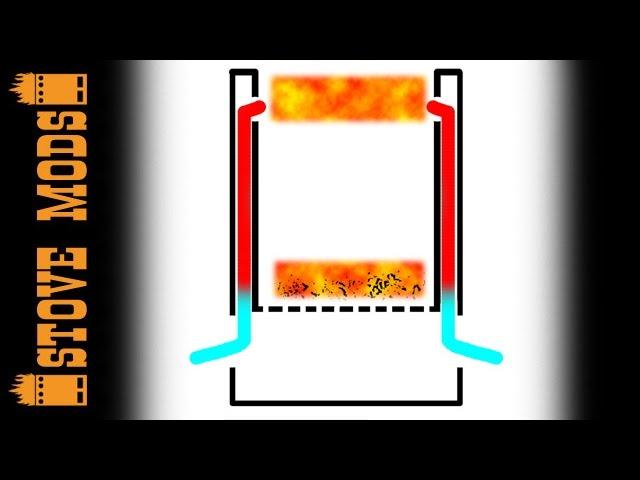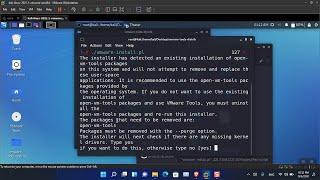
What's the difference between a woodgas stove and a hobo stove - Stove Mods theory lesson
Комментарии:

Does the woodgas stove produce less smoke? If so, what is the science?
Ответить
For the first time I have understood the theory behind the design.
Ответить
I prefer wood gas stove because of the proven reasons you talked about and you can burn not only wood but wood pellets that are perfect fuel for these stoves, use sny type of alcohol stoves in them and the wood gas stove work as a windshield. You can use the base of the wood stove for windshield for gas stove, . In wood gas stove you can use charcoal, pinecones etc. It is really a multi fuel
Ответить
Se necesita probar. Sino es solo palabras.
Ответить
It does not explain why we see flames coming from those top row of holes.
Ответить
very clear.
Ответить
what if i will put a controlled fan in the wood gas stove does it fuction the same
Ответить
which is more efficient/consume less fire wood with more time
Ответить
stupid theory.😔
Ответить
The gasifier stove can easily produce high power, but it's not so easy to let it burn with low power for a long time (until you have a good coal fire going). But it's possible.
You need the best dense fuel you can get and you will need to build up experience with the stove and the fuel. The best you can find almost everywhere are thumb thick branches, just too thick to break them by hand. I highly recommend bringing branch shears.
Cut them 1-2 thumbs short, that way they should burn for about an hour long evenly. But starting the fire is always different, it can be too fast easily.

Tip ... if you're going to claim to explain something you should understand it first. This explanation is not correct as it implies that only air is drawn up the sides where it's actually air mixed with the wood gas that is con ected with it from underneath the combustion chamber.
Ответить
Thanks sir
Ответить
Somple and excellent, now I can show off my Wood Gas Stove to my mates with logic 😅
Ответить
For anyone still seeing this video. It should be mentioned that some wood gas is drawn downward thru the bottom holes of the inner burn pot and mixes with the incoming air providing a hot fuel air mixture at the jets, not just hot air. If the air supply comes from a small computer fan with a select-able power, then the flame size can be varied in strength though it remains orange and sooty and the bottom hole arrangement is poor for a fan assist.
Instead 1) place the bottom holes as a ring around the bottom of the inner burn pot sides such that the combined area of all the bottom holes is about 1/3 the combined area of all top holes and the ring should be about 1 or 2 cm from the bottom of the burn pot at the level of the coals.
2) direct the fan to blow thru a single large opening in the bottom of the outer can such that it flows up the annular gap for a few cm before passing over the bottom ring of holes to suck up wood gas from the pyrolysing fuel. Little baffles could add turbulence for better mixing.
3) now varying the fan will mix the wood gas so the jet flames range from lazy orange colour jets with black sooty tips all the way up to very turbulent bright whitish yellow flame jets with blue hints and at the base of each flame jet. The latter is super clean and consumes the fuel much faster.
Dr Tom Reed pioneered gasifier stoves decades ago so just search "reed inverted downdraft gasifier stove" for best designs, and detailed gasifier theory.
Using a fan makes these inverted downdraft wood gasifier stoves operate with positive pressure but you can also set such a stove (with out a PC fan) inside a large thick steel metal box which has a controllable extractor fan for the chimney thus operating the stove on negative pressure. The flames looks the same in either mode.

It also forces cooler, unburned gases downward. Then they mix with the fresh air and get superheated. That is why jets come out. Hot air itself will not create jets of flame. There is a better video that proves this with a outer chamber made of glass. He shows how everything flows with smoke. Much better learning tool.
Ответить
Hi, I recently discovered this pyrolysis phenomenon and in fact it has become my hobby of the moment. There are some things that are not clear to me, however. Strangely enough, the first tutorial I saw was with only one can, and in fact so I built my first stove. When the pyrolysis stops, a lot of smoke comes out. Then I saw that most stoves are made with 2 cans, and so did I. In addition to seeing the flames that come out of the holes above, when it ends, not all that smoke comes out. In this drawing you explain very well how the flows of air and gas occur. Can you also explain how they happen in one can?
Ответить
Thanks for explaining it in such a understandable way. Much appreciated.
Ответить
Te best explanation I found
Ответить
Awesome! Just what I was looking for. I’m going to try using aluminum foil wrapped around my Ikea hobo stove and see if I can make it burn cleaner. I’m going to use (real) duct tape and aluminum foil to close off most of the holes going up the sides of the Ikea silverware holder. Then wrap another piece of foil loosely over the whole thing to create the outer wall/hot gas chamber. I already have the whole thing sitting up getting good airflow underneath. I think it will work according to your nice drawings. We’ll see if my execution works. If it does, I’ll post a video of it in action.
Ответить
Excellent tutorial; thanks for your clear and concise explanation ... Cheers.
Ответить
Are the TLUD stoves same as wood gas stoves
Ответить
Video is insanely quiet. Please crank your mic or talk louder!
Ответить
what if you make a feeding hole on the side (low, like a rocketstove) and then sealed it closed in both the innerwall and the outer wall, so air won't leak at those points? You could even limit the amount of air intake through that hole by making a lid for it?
Ответить
Great example 👍 Thanks
Ответить
please turn the intro audio down. it's so loud :(
Ответить
The main idea of gas transporting is missing in your video..
Ответить
I am sorry but this is not a complete explanation of the workings of a wood gas stove. The composition of the gases coming up in the double wall space is not strictly air but also gases expelled by the burning wood. If you take measurements of the pressure just below the holes at the bottom of the combustion chamber, you will see that the pressure is higher than in the double wall chamber. The burning wood expels gases and a big part of these gases are moving DOWN through the holes at the bottom of the combustion chamber then they are drawn in the double wall and exit at the top and ignite.
The whole process is clear when looking at a wood gas stove with the outer walls made of glass.
Ref: /watch?v=wzN-cYR84_Y&t=143s

Nicely explain and very easy to understand. Thank you
Ответить
A great explanation. Thank you. I always top light my wood gas stove having gauged the amount of fuel I need for a particular boiling or cooking task. I can add fuel if needed but it is rarely necessary depending on density of fuel, conditions etc. Thank you for sharing. Paul :)
Ответить
A great explanation, the drawings make things really clear. Thanks
Ответить
Great
Great diagrams and explanations of the air flow.
So many get these basics wrong
On the question of BOTTOM UP or TLUD
1 - If your only using it for a small amount of heat ( eg. to boil 1 cup water)
the bottom up method works fast and you can add just enough fuel as required to complete the coking/boiling process and you have very little waste/unburnt fuel at the end
2 - But if doing some serious cooking then the TLUD (Top Lit Up Draft) method gives a longer more controlled burn and you don't have to hang around feeding the fire, lifting on and off a big pot of boiling water/food to add more fuel
TLUD = Top Lit Up Draft the fire burns longer and more efficiently if wood is
packed in and lit from the top like it is designed to be used. The fire then
only heats and gasifies the wood near it and heats the sides of the internal
metal cylinder causing the vents to let out warmed air to ignite the rising
wood gas. This gives an even and controlled longer burning process from a bigger initial batch of fuel.
If BOTTOM LIT, the fire heats ALL the wood ABOVE
IT rapidly gasifying it often giving off more gas than the air vents can cope
with.
This results in lost/unburnt wood gas= blacker bot bottoms = lost
potential heat = short lived fire = less efficient fuel use
If you mainly use bottom lit, then the secondary air holes need to be
bigger or more numerous
It just depends what your cooking each time, which method you choose to use
standing on the shoulders of others

Very few people understand the concept of the woodgas stove. Thank you for getting it right. Very good explanation of how it works. I have seen too many video's telling us that there is an inversion that causes the fire to burn down. that is BS. you nailed it.
Ответить
thanks for a good explanation time 2 play now :)
Ответить
Greetings and congratulations from Argentina!
Ответить


![How To Install VMware Tools in Kali Linux [Kali Linux 2020.2] How To Install VMware Tools in Kali Linux [Kali Linux 2020.2]](https://invideo.cc/img/upload/a2ZRNm5rTG5jMFA.jpg)






















